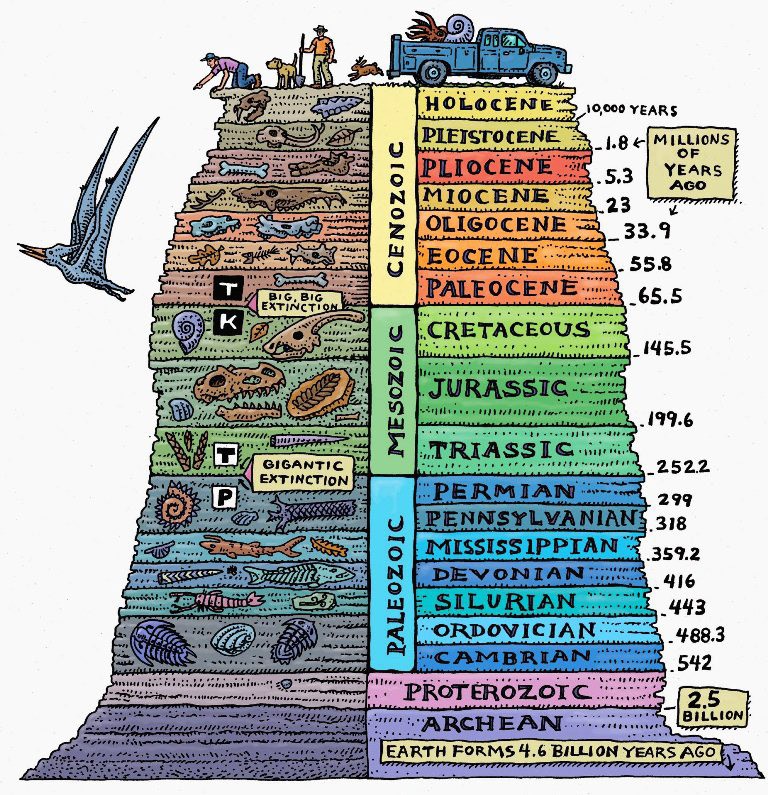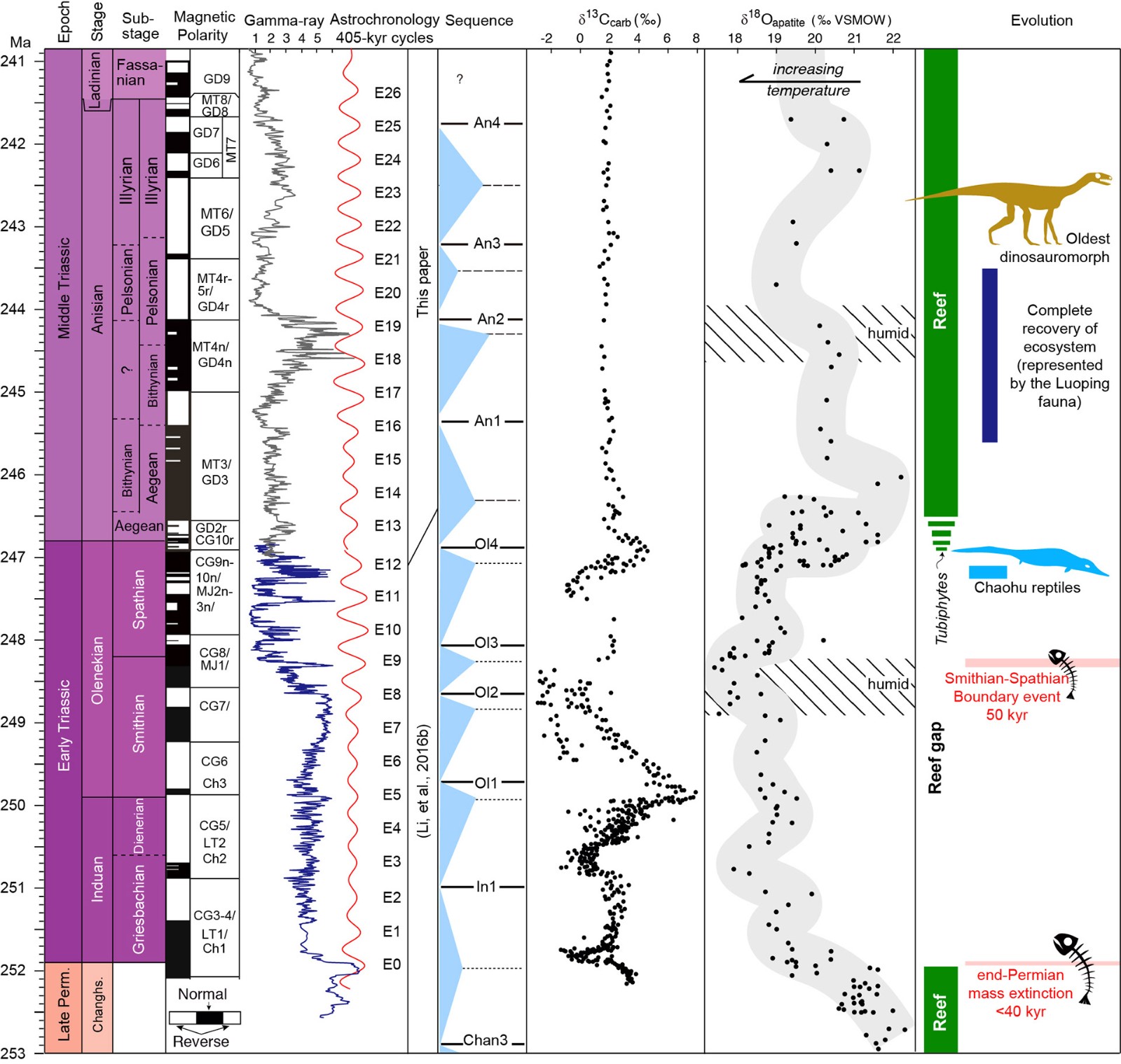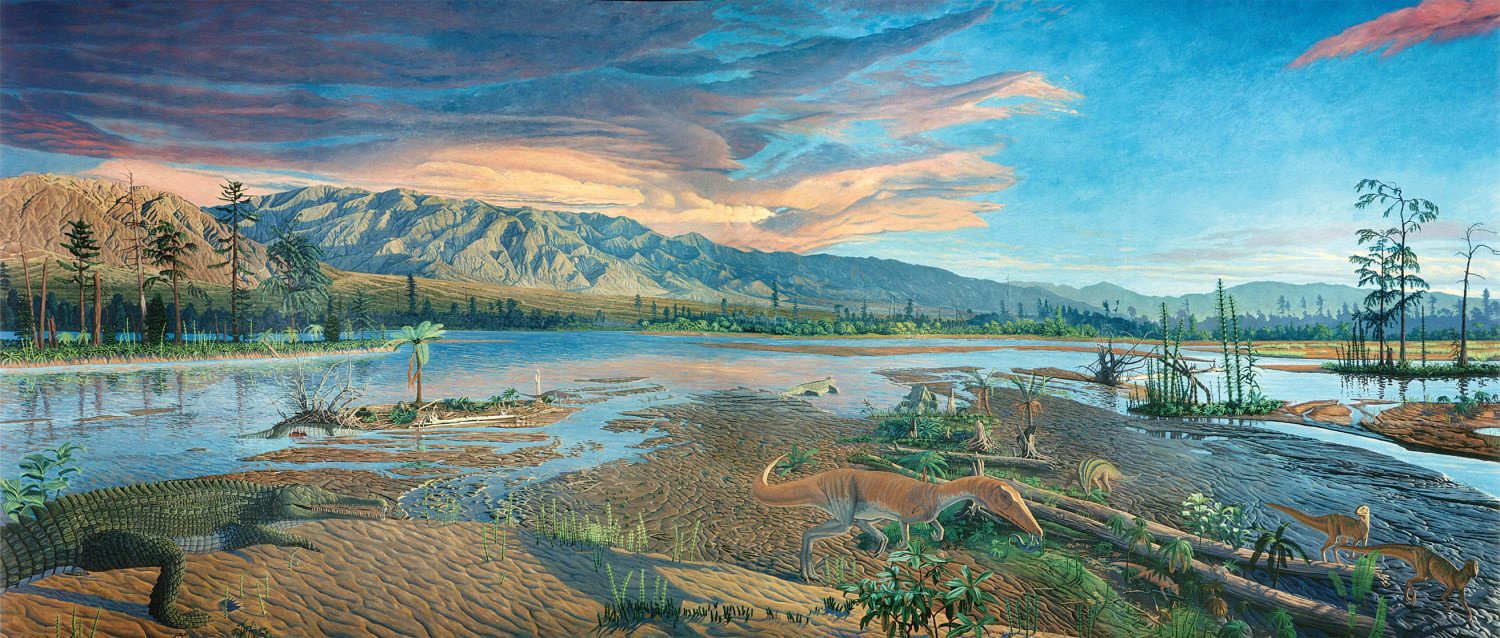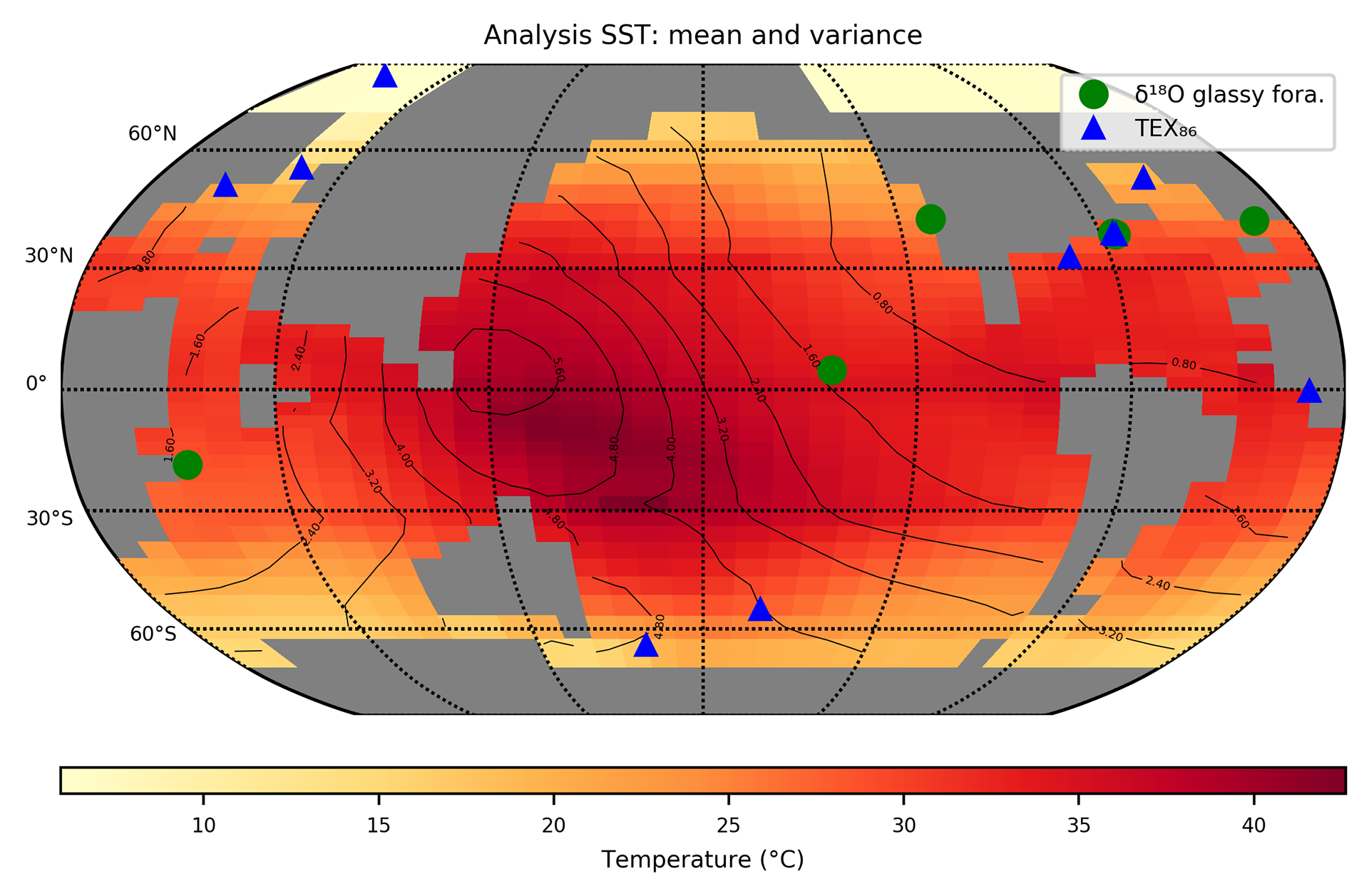Mingsong Li
Gender: Male
Education Level: Postgraduate (Doctoral)
Alma Mater: China University of Geosciences (Wuhan)
Research
Research Field
-
1. Connections between sea level and groundwater: the missing link
About two-thirds of the world's largest cities are located in coastal areas less than 9.1 m above sea level. Estimates of sea levels by the Intergovernmental Panel on Climate Change (IPCC) suggest 0.52 to 0.98 m of sea-level rise during the 21st century. The IPCC considers groundwater changes to be small and compensated for by other contributions to sea-level rise. The estimation is rooted in modeling of sea levels in the present day icehouse. However, the causes of 10^4-10^5-year scale, large (> 75 m) sea-level changes in greenhouse eras lacking ice sheets, e.g., during the Triassic Period 250 million years ago, remain a mystery, challenging current models of sea-level change. To address this mystery, I developed a novel sedimentary noise model for sea levels and found that water mass ‘see-sawed’ between ocean and groundwater in the Triassic (Li et al., 2018 Nature Communications). This finding indicates long-term, large water exchange between ocean and land forced by Earth’s obliquity forcing is a missing link for reconciling geological records and models for sea-level change in greenhouse eras. Thus, as present-day Earth continues toward both warmer climate and lower obliquity angles, changes in groundwater should be reassessed in projections of global sea-level.
References:
1. Mingsong Li, Linda Hinnov, Chunju Huang, James Ogg. 2018. Sedimentary noise and sea levels linked to land–ocean water exchange and obliquity forcing. Nature communications, doi:10.1038/s41467-018-03454-y.

Image: an artist's rendering of a coastal ocean landscape in the Early Triassic world 250 million years ago. Credit: Hewei Duan

Water exchange between continental water storage and the ocean forced by astronomically forced climate change leads to major sea-level variations. Illustrations © Hewei Duan
2. Geological timescale revolutionized by astrochronology
The geologic timescale is a common language used by geologists, paleontologists, and other geoscientists to describe the timing and relationships of geological events. Unfortunately, the resolution of most traditional chronologies is on the order of a million years. Studies of Milankovitch cycles recorded in sediments have led to the rise of astrochronology. Astrochronology is the only method that provides continuous and high-resolution timescale (as low as thousand-year resolution) in deep time, representing a key step toward the ultimate goal of a high-precision timescale.

Image Credit: Ray Troll
I have developed an astrochronology for the Triassic in South China, Italy, Germanic Basin and Newark Basin. This astrochronology provides a high-resolution timescale for studying carbon-cycle perturbations, biodiversity changes, and sea levels covering a variety of striking global warming events.
Induan and Olenekian Ages (Early Triassic) (251.9- 246.8 Ma): Astronomical-cycle tuning of spectral gamma-ray logs from marine sections at Meishan, Chaohu, Daxiakou and Guandao in South China yields an integrated timescale for the Early Triassic, which is consistent with scaling of magnetostratigraphy from climatic cycles in continental deposits of the Germanic Basin (Li et al., 2016 EPSL). Th age of the Early Triassic substages has been cited by A Concise Geologic Time Scale 2016 as a global reference.
Anisian Age (Middle Triassic) (246.8-241.5 Ma): We present high-resolution gamma ray (GR) and magnetic susceptibility (MS) series of the Anisian stage at Guandao section in Guizhou, South China. GR and MS variations show Milankovitch signals that support the prediction of astronomical solutions. Astronomical tuning of the GR and MS series to interpreted 405-kyr long orbital eccentricity cycles yields a 5.2 Myr astrochronology for the Anisian Stage. (Li et al., 2016, GSA and Li et al., 2018 EPSL).
This study leads to 10+ news in China.

Astronomically-tuned timescale for biotic recovery following the end-Permian great dying (Li et al., 2018 EPSL)

Image Credit: William Sillin
Carnian Age (Late Triassic) (237.0-228.4 Ma): Cyclostratigraphy derived from GR curves was combined with magnetostratigraphy of two sections in Guizhou Province and one location in Sichuan Province. The magnetostratigraphy of all sections are consistent with the cyclicity and characteristic GR features, thereby enabling a cycle-tuned magnetic polarity scale spanning ~ 2.4 myr (Fig. 2). This magnetostratigraphic correlation implies that the termination of the Yangtze Platform is coeval with the beginning of the mid-Carnian Pluvial Event. The cycle-scaled magnetic-polarity time scale supports the “Short-Tuvalian/Long-Norian” age model of the Late Triassic. (Zhang, et al., 2015, Palaeo3).
Rhaetian Age (Late Triassic) (205.5-201.4 Ma): The Newark Supergroup-based astrochronology and geomagnetic polarity time scale (APTS) provides a basis for the Late Triassic timescale. However, the Newark-APTS has been continuously challenged regarding its age and completeness. We provide a new 6.5 million years (Myr) long Xujiahe-APTS for the lacustrine-fluvial Xujiahe Formation at Xujiahe, Qilixia, and Tanba sections in Sichuan Basin, South China aiming to provide an integrated time scale for the Late Triassic. Cycle tuned magnetostratigraphy of the Xujiahe Formation in South China correlates well with the Newark APTS of North America. (Li et al., 2017 EPSL).
This study leads to 100+ news reports in China.
References:
3. Mingsong Li, Yang Zhang, Chunju Huang, James Ogg, Linda Hinnov, Yongdong Wang, Zhuoyan Zou, Liqin Li. 2017. Astronomical tuning and magnetostratigraphy of the Upper Triassic Xujiahe Formation of South China and Newark Supergroup of North America: implications for the Late Triassic timescale. Earth and Planetary Science Letters. doi: 10.1016/j.epsl.2017.07.015
2. Mingsong Li, James Ogg, Yang Zhang, Chunju Huang, Linda Hinnov, Zhong-Qiang Chen, Zhuoyan Zou. 2016. Astronomical-cycle scaling of the End-Permian Extinction and the Early Triassic Epoch of South China and Germany. Earth and Planetary Science Letters. 441:10-25, doi: 10.1016/j.epsl.2016.02.017
1. Yang Zhang, Mingsong Li, James Ogg, Paul Montgomery, Chunju Huang, Zhong-Qiang Chen, Zhiqiang Shi, Paul Enos, Daniel J. Lehrmann, 2015. Cycle-calibrated magnetostratigraphy of middle Carnian from South China: Implications for Late Triassic time scale and termination of the Yangtze Platform. Palaeogeography, Palaeoclimatology, Palaeoecology, 436, 135-166. doi:10.1016/j.palaeo.2015.05.033

3. Mechanisms for paleoclimate change in a greenhouse world
3.1 Paleocene–Eocene Thermal Maximum Data Assimilation
🚧 The world is under construction 🚧


🚧 The world is under construction 🚧
3.2 Early Triassic
Obliquity-forced climate during the Early Triassic hothouse: The recent geochronologic evidence constraining the latest age of the Siberian Traps to 0.5 m.y. following the end-Permian mass extinction makes it unlikely that volcanism drove the unusual global dynamism of the Early Triassic, as currently widely thought.
The discovery of dominant obliquity-forced sedimentation across the South China Plate margin synchronized with global changes provides an alternative view: the global changes are linked to “recovery” responses to Earth’s obliquity forcing of an unbalanced, post-extinction world. (Li et al., 2016 Geology).
This study leads to 30+ news in China.

Image Credit: Hewei Duan
3.3 Oligocene-Miocene transition
Astronomical forced climate change during the Oligocene-Miocene transition: The Oligocene-Miocene transition period was characterized by a decrease in global CO2 levels, expansion of polar ice sheet, fall in global sea-level, etc. Power spectra of the L* series at ODP Site 926 showed that the long eccentricity signals became significantly weak, while the obliquity signals became strong, from the Late Oligocene to the Early Miocene. The 405 kyr long eccentricity minimum coincided with the 1.2 Myr obliquity node at the OMB, and similar convergences might be closely related to other extreme-cold events in Earth’s history. (Zou, et al., 2016).
References:
2. Mingsong Li, Chunju Huang, Linda Hinnov, James Ogg, Zhong-Qiang Chen, Yang Zhang. 2016. Obliquity-forced climate during the Early Triassic hothouse in China. Geology. 44(8): 623-726, doi: 10.1130/G37970.1.
1. Zhuoyan Zou, Chunju Huang, Mingsong Li, Yang Zhang. 2016. Climate response to astronomical forcing during the Oligocene-Miocene transition in the equatorial Atlantic (ODP Site 926). Science China Earth Sciences. 59(8): 1665-1673, doi: 10.1007/s11430-016-5311-y
Publications
-
Paleoclimate Data Assimilation: Principles and Prospects.Science China Earth Sciences,null Science China Earth Sciences,
-
古气候数据同化:原理和展望.中国科学: 地球科学,null 中国科学: 地球科学,
-
Highresolution sedimentary cyclostratigraphy and astronomical signals in the Upper Ordovician of Southwest China.Palaeoworld,null Palaeoworld,
-
Coupled decline in ocean pH and carbonate saturation during the Palaeocene–Eocene Thermal Maximum.Nature Geoscience,null Nature Geoscience,
-
古新世—始新世极热事件时期轨道尺度海洋脱氧的时空演化.中国基础科学,null 中国基础科学,
Research Projects
-
Temporal and spatial evolution of orbital scale ocean deoxygenation during the Paleocene-Eocene Thermal Maximum, National Key Technologies R&D Program , 2022-12-01
-
Metal stable isotope geochemical technique for tracing the evolution of the Earth's habitability in the middle Proterozoic, National Key Technologies R&D Program -2026-12-31 , Co-PI
-
Sea level reconstruction from the Lower Triassic Xiejiacao section of Guangan, Sichuan, Hubei Key Laboratory of Critical Zone Evolution, China University of Geosciences, Wuhan , 2021-01-01
-
Astrochronology and paleoclimate change , 2021-01-01
-
Study on the mechanism of lake level and sea level changes in the Early Triassic of China and Germany based on sedimentary noise modeling, National Natural Science Foundation of China (NSFC) , 2021-01-01
